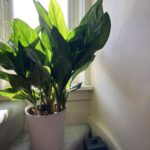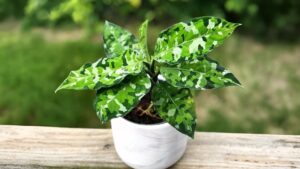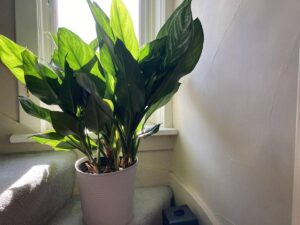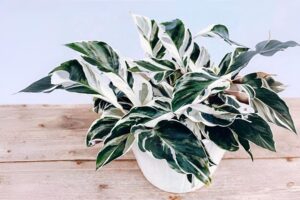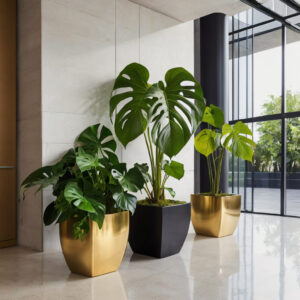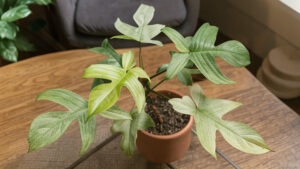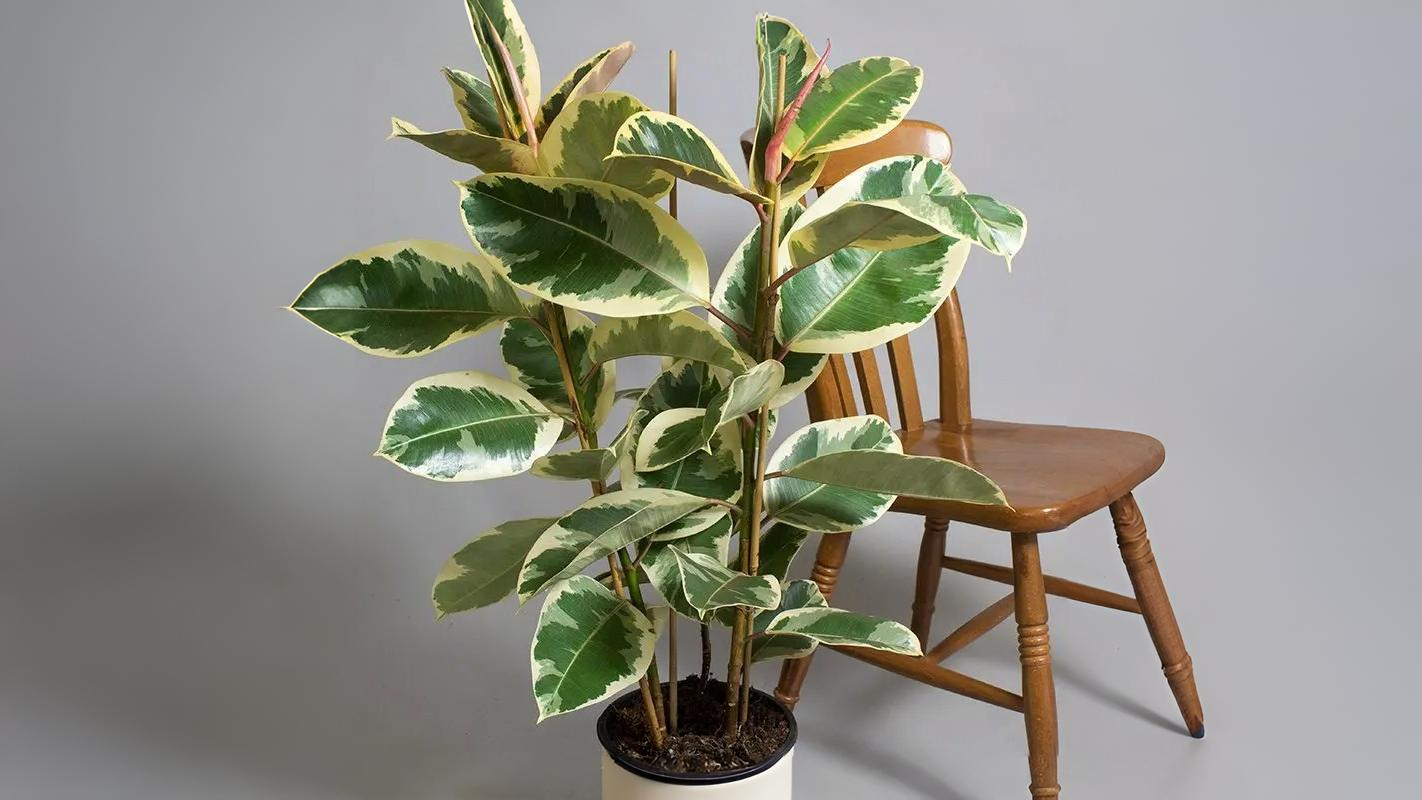
Ficus elastica ‘Tineke’ is a variegated cultivar of the classic rubber plant (Ficus elastica). It is especially admired for its striking foliage, which features a blend of green, cream, and sometimes pink hues, and is a showstopper in any indoor garden.
In this article
Why will I love it?
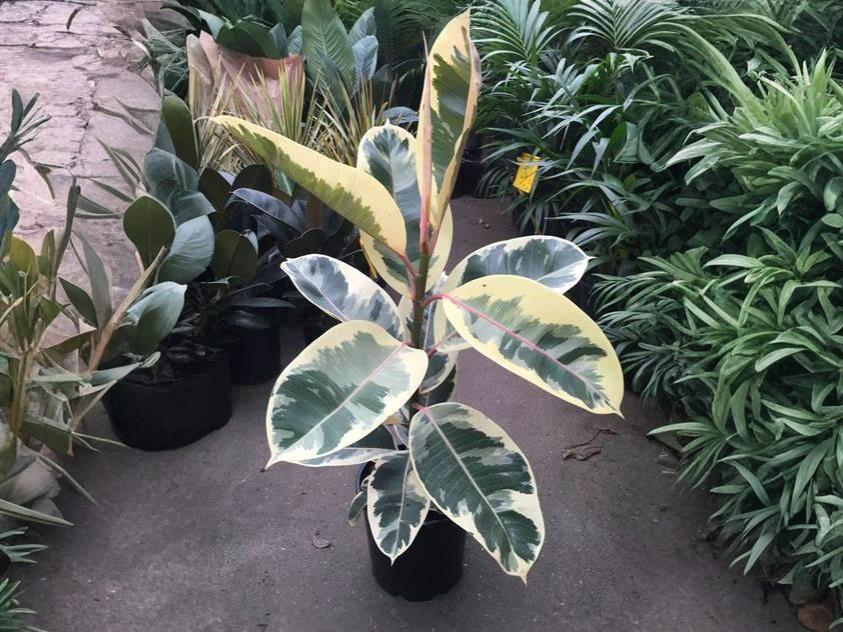
Ficus Elastica ‘Tineke,’ also known as the variegated rubber plant, is a low-maintenance houseplant that adds a pop of elegance to your space. Its glossy leaves are splashed with creamy white, green, and hints of blush pink, making it a stylish choice for any room. Plus, it’s an excellent air purifier, so it not only looks good but also works hard to freshen up your home.
Light or shade?
This beauty thrives in bright, indirect light. While it can tolerate medium light, its variegation will be most vibrant when it gets ample filtered sunlight. Avoid harsh direct sunlight, as it can scorch the delicate variegated leaves.
Where should I put it?
Place it near a bright window where it can soak up indirect light—think an east- or west-facing windowsill. Its upright growth habit makes it perfect for a corner space, an empty wall, or even as a statement piece on a plant stand. Just make sure it’s not exposed to cold drafts or heating vents.
Care overview
| Requirement | Details |
|---|---|
| Light | Bright, indirect sunlight |
| Water | Allow top inch of soil to dry between waterings |
| Temperature | 60–85°F (15–29°C) |
| Humidity | Average to high |
| Soil | Well-draining, rich potting mix |
| Fertilizer | Every 4 weeks in summer, less in winter |
How do I keep it alive?
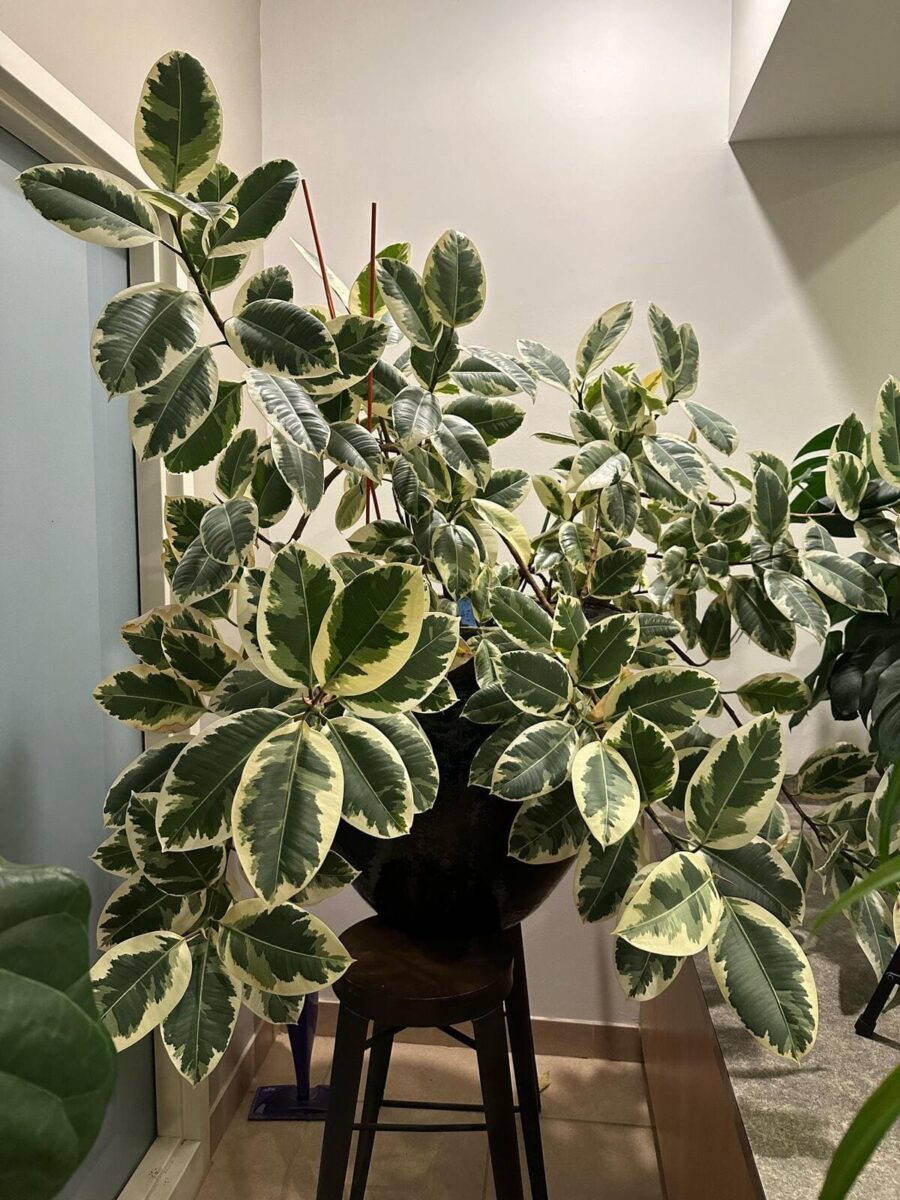
Water your Ficus Elastica ‘Tineke’ when the top inch of soil feels dry. Be careful not to overwater—this plant prefers well-draining soil to prevent soggy roots. I recommend a pot with drainage holes to avoid waterlogging. Keep it in a warm spot, ideally between 65-80°F, and maintain moderate humidity levels. During spring and summer, feed it with a diluted balanced liquid fertilizer once a month to encourage healthy growth.
Did you know?
The Ficus Elastica ‘Tineke’ originates from Southeast Asia and is a cultivar of the rubber tree. Its milky white sap has been historically used to make rubber, hence its common name. While it’s a stunning addition to any home, its sap is toxic if ingested, so keep it out of reach of pets and children.
RELATED: 10 Best Tall Houseplants for Adding Impact to Your Home
